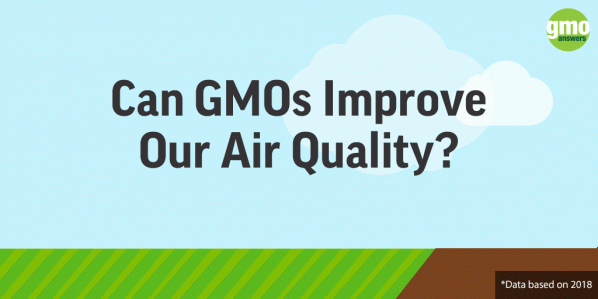ARTICLE: World Hunger Is Only Getting Worse. How Can We Fight It?
The following is an excerpt of an article from the Discovery website detailing the role GMOs can play in fighting world hunger.
Humanity is facing a looming crisis. As the world’s population grows bigger so does the number of people without enough food.
11.3% of the population, roughly 805 million people, do not have enough to eat on a daily basis. 526 million of those live in Asia.
By 2050 there will be another two billion people on Earth to feed. So, what can we do to solve this problem?
Here are five ways we can fight world hunger.
1. Vertical Farming
Vertical farming entails growing crops hydroponically in vertically stacked layers. The crops are grown in a controlled environment which eliminates the need for pesticides or herbicides.
LEDs (light-emitting diodes) can be used to mimic the sun, ensuring that all the plants gain an optimal amount of light.
The scalability and self-contained nature of vertical farms make them ideal for urban environments.
They can be placed in a skyscraper just as easily as a cargo container. You could even make your own personal vertical farm if you have a spare room or closet.
Vertical farms are extremely efficient. Yields are 75 times bigger per square foot (0.09 square metres) and use 95% less water than regular farms. They represent a cleaner and more sustainable urban alternative for crop production.
2. Curb Food Wastage
Food wastage is perhaps the most shameful of our problems.
Despite the hundreds of millions going hungry, we waste an incredible amount of food – 1.4 billion tons according to the United Nations. That is enough to feed 2 billion people for a whole year.
Over-purchasing, confusing best-before dates and preparing more food than we need are just a few of the many problems which contribute to food wastage.
We also tend to pick the most attractive looking fruits or vegetables, despite them being nutritionally identical. This leads to supermarkets disposing of perfectly good food.
An easy way to start fighting food wastage is to shop mindfully, keep your serving sizes in check, and save leftovers.
3. Genetically Modified Organisms
Genetically modified organisms (GMOs) are a subject of some controversy. Some say we do not understand if there are long-term effects from their consumption, while others insist they are safe.
The debate for and against will continue in developed countries, but GMOs could be a boon for the developing world.
Crops can be made hardier and yields more reliable, preventing crop losses and bad harvests. This could effectively save the lives of subsistence farmers.
Crucially, GMOs can be fortified with nutrients to combat malnutrition, which is a common problem in poorer parts of the world.
The Rockefeller Foundation created ‘golden rice’ which is rich in beta-carotene, the precursor to vitamin A.
Vitamin A deficiency is the leading cause of blindness among children in the developing world, affecting more than 114 million children globally.
Golden rice has been approved by the United States Food and Drug Administration, and the Rockefeller Foundation has made the patent free for all humanitarian use.
In future, humanitarian organisations could use GMOs to address specific nutritional problems in developing countries, saving millions from death, disease and suffering.



